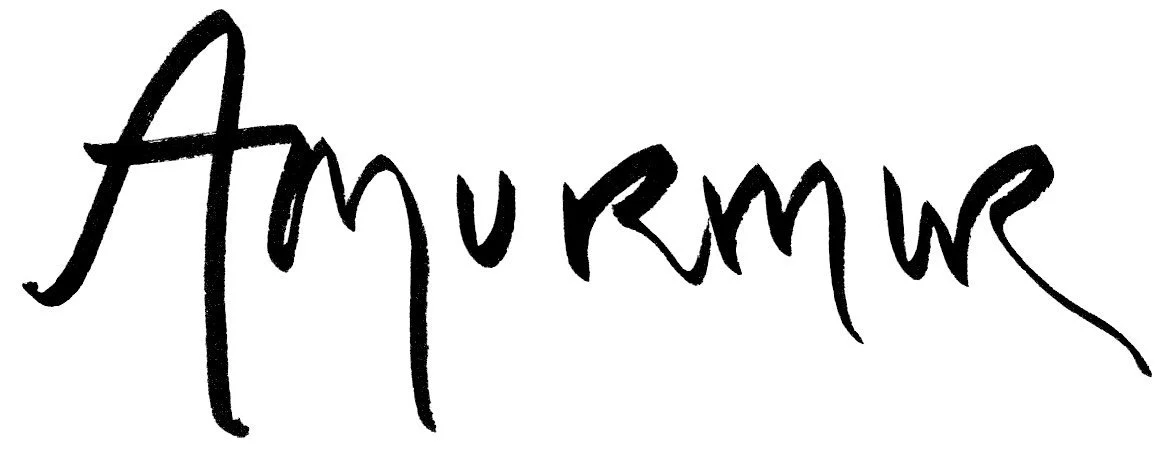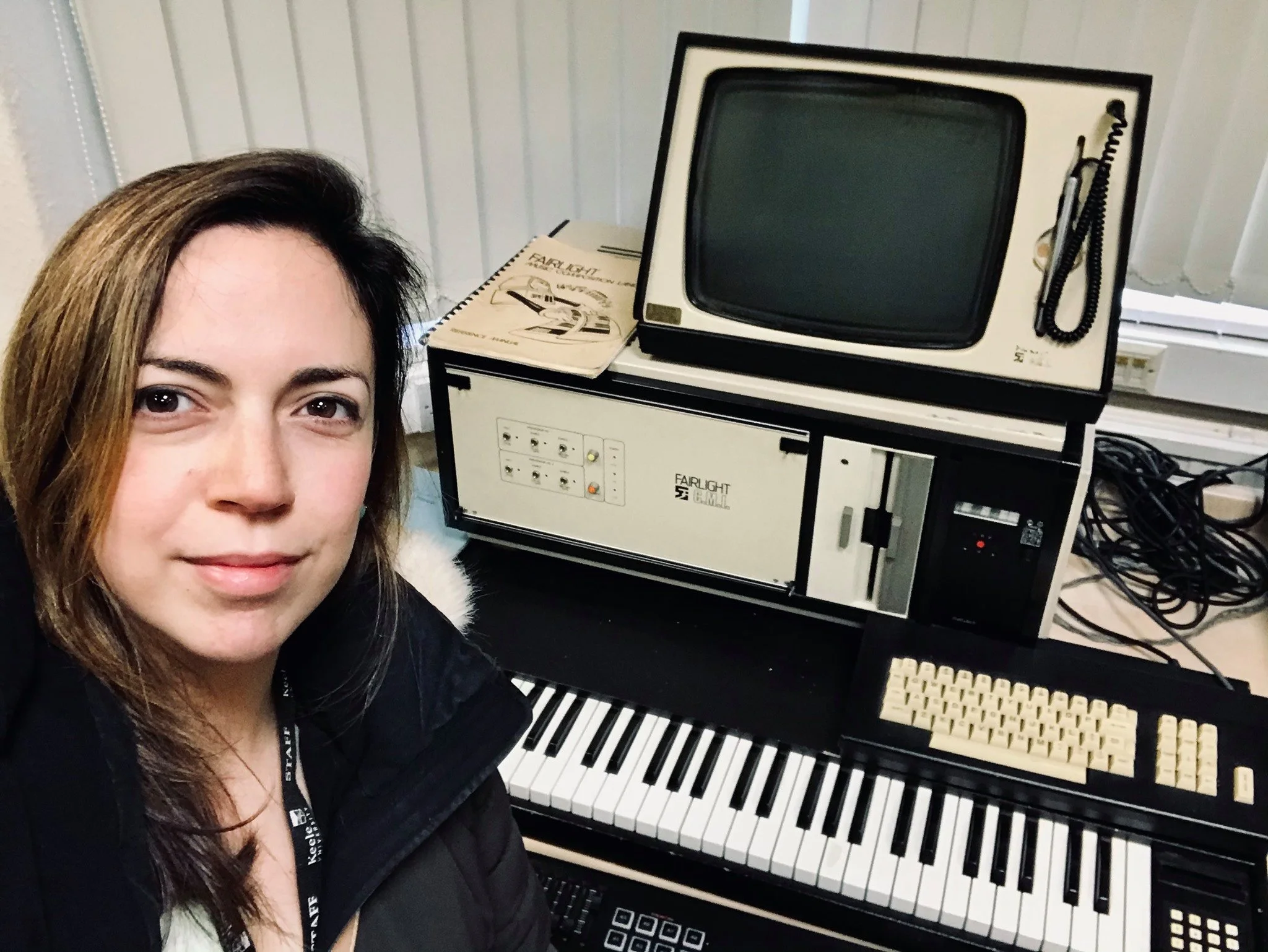Cupboards, Landlines and Fairlight CMI
The acousmatic music creations of Manuella Blackburn
How did you choose to explore memory in this piece?The inspiration for this work came about from looking through and clearing out a set of drawers at home where I found old photos, ticket stubs, business cards, birthday party invites etc… that I had kept hold of. Within these drawers, I remember finding a ticket from a bonfire night event I attended with my kids, and this really sent me back in time to this memory, remembering how small they were. I used this experience of opening these drawers as a trigger to unlock memories of specific times.
You recorded the opening and closing of cupboards, how true is this action in regards to revisiting your own memories? Yes, I recorded lots of different cupboard doors and drawer openings and closes to ensure I had plenty of sound material to work with in the composition. Variation is important to provide greater sonic interest. All the opening/closing actions were staged or performed, so in a way this action was quite unnatural. For example some cupboards were opened excruciatingly slowly to get the maximum amount of creak possible in the recording. The actual opening of the drawer wasn’t really the focus of my memory being explored here, but it was an essential sound for my composition to realise this idea of opening a draw and the memories popping out of them (a bit like a jack-in-the-box).
Did you use objects and sounds from your personal collection? Yes, all the sounds were sourced from my home. Going back to the ticket from the bonfire night, this memory is presented in the composition between 3’05-3’55 where I used sound recordings of fireworks which also happened to capture my kids giggling and saying, “so pretty” (3’21) and “wow” (3’31) in reaction to the fireworks. There are other sounds recordings: birdsong, ocean waves, jewellery, pencils, paper and kids’ toys.
You speak of sonic interruptions in your process, how did the opening and closing of cupboards and rustling of memories achieve this?This was a crucial mechanism to act as either an onset or termination for sound material. For example, when you close a door, this impact sound can assist in shutting other sounds going on around it – I interpret these as interruptions as wherever you inset them, they can interrupt the flow and continuity of other sounds. I really love the effect of impacts which have heavy, bass-like content as they are great for shaping and sculpting phrases. The opening of a door or a drawer have a different effect as these act like risers or builds that can trigger off new sounds. This is a classic causality motion which builds anticipation for the next event/gesture. Generally, the continuity I have in my musical ideas is cut short by interruptions (impacts, gestures, closing cupboard doors).
Did anything surface as you were exploring this? I knew before making this piece that door sounds are a bit of cliché within acousmatic music, and as I spent time working with these sounds I couldn’t help but follow this cliché and use doors as a sonic symbols to shift my music into different spaces and environments. In terms of other things that surfaced, this was the first time I had used my kids’ voices in my music (between 3’05-3’55). This is now my favourite bit in the whole work as listening to this section immediately takes me right back to that moment at the bonfire night, immortalising that time for me in such a vivid way.
What process did you go through to create this piece?This piece was on my to do list for a long time, I think a couple of years before making it. I had the concept of the drawers and memories first (when physically going through that experience as explained in the first question). When I started the work, I gathered cupboard and drawer sounds from around my home and edited these into smaller gestures. I then started to think about what each door and drawer opening could trigger e.g. the outdoors, the ocean, the kids’ voices and fireworks, more mundane cupboard content like stationary or kitchenware etc… I then played with lots of ideas, working in small sections or phrases before settling on a structure that worked.
how did you choose to explore memory in this piece? This work was inspired by finding my landline phone lying behind the sofa. It has been forgotten about and unused and it made me think about the phone as a sound source and how, when I was younger, the landline phone used to be a much more central feature within the home. The work exploits the sounds generated by the telephone and my intention was to recreate the sounds of the phone as I remembered when I was a child.
were you focused on reviving the 'endangered household object' or your own memories of it? My own memories of it. At the time of composing this work, I was coming to terms with the realisation that parenting often compels you to revisit memories from your own childhood. I found that composing with an object/sound from my past provided a meaningful way to document and process these experiences.
did you follow a particular process to reimagine the landline sound?I listened to lots of different landline recordings. The rotary dial telephone had a particular sound I was looking for, as it was the one I had in my memory. I accessed an online museum which granted permission to use one of their sounds for this work. I remember auditioning quite a few sounds to satisfy a particular memory I had in mind.
did anything surface as you were exploring this? Yes, I think I explained this above about parenting and the fact that no one tells you that you that when you have children, you will re-live your own childhood, however good or bad it was. Using the sounds themselves and setting up a recreation of the phone I remember was helpful in fixing a memory in my head with more certainty.
was the recording and creation of this piece different to any of your other projects? Yes. This work offers much more sustained sonic content than in my other works. It has a soothing quality to it because of the harmonies of the dial tones. I found that the sound material was more sustained (long pitches of dial tones and hums) and less gesture focused, although I did have fun composing with the rotary phone mechanics and the push-button phone recordings.
is there a reason behind the title of this work? would you consider it an ode to brevity? This work was a farewell to the Fairlight CMI which I was leaving behind when I moved to another job. I left Keele University in 2021 when I went to The Open University. I composed this work which explores the Fairlight CMI sound library. All the sounds in the library were very brief (no longer than a second in duration due to the limitations of the device’s memory capacity). The title indicates me saying goodbye to this instrument which I became very interested in due to its history and sonic quality. I ended up returning to Keele University in 2023 where I now work again.
can you describe the process behind working with this archive? The Fairlight CMI Sound library was instantly appealing to me as the duration of the sounds were so brief. I’ve had a long-term interest in using small sounds in a pointillistic way to create rich clusters and accumulations of sound files in many of my works. This library offered lots of short sounds to work with. The sounds are all 8-bit quality, so they were a little harder to work with, but I ended up celebrating/exposing this dated quality a bit more in the compositions. I also chose to work with this library as it holds a number of iconic sounds, many popularised by their used in 80s pop songs. I wanted to see what I could do with these in an acousmatic music context.
How important is it for you to memorialise and converse with important aspects of sound history?I like the way acousmatic music can be open to all sound material and how the craft and sculpting belonging to this artform can transform sounds into something extraordinary. In 2007 I composed a piece called Kitchen Alchemy which transformed the mundane sounds of kitchen utensils into something more precious and elaborate (inspired by the myth of alchemy), and this concept still remains strong in all my works where I prioritise the aesthetic quality of the sounds, from whatever starting point I have e.g. plastic waste, 8-bit Fairlight sounds, firework explosions etc… I make it a goal to create something beautiful from something we might not pay much attention to the first time around. In terms of memorialising or conversing with aspects of sound history, I think this is important and using acousmatic music making as a way of doing this just makes the connection stronger since this involves a deeper level of engagement with these sounds, from a practice point of view.
did you work with memory and archives for any of your other pieces?Spectral Spaces (2008) used Denis Smalley’s project files from his work Windchimes (1987)
Presque mon son (2015) uses soundfiles from the Luc Ferrari sound archive.
words: Manuella Blackburnmusic courtesy of Manuella Blackburn via Bandcamphttps://www.manuellablackburn.com
